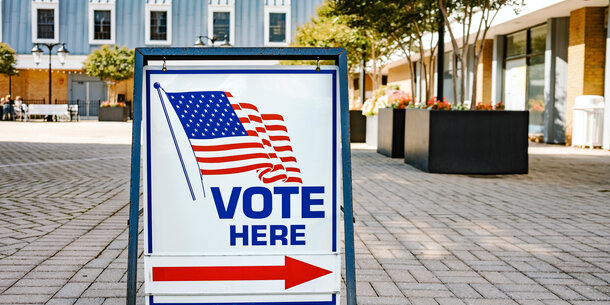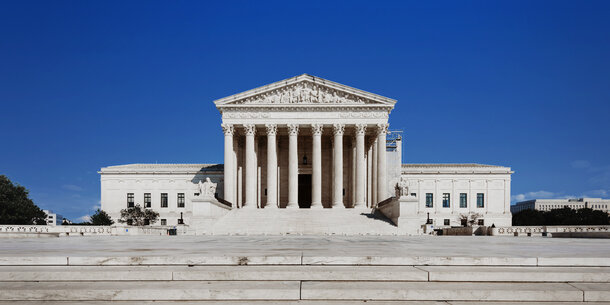You’re reading The Briefing, Michael Waldman’s weekly newsletter. Receive it in your inbox.
Sixty years ago this month, the Senate passed the Voting Rights Act, a historic breakthrough in a chamber long dominated by segregationists. Now, through cases like Shelby County v. Holder, the Supreme Court has stripped the strongest enforcement tools from that law, and voter suppression is once again on the rise.
States have enacted dozens of laws that make it harder for citizens to vote. What impact will they have in next year’s vital midterm elections?
The Brennan Center has provided compelling evidence that these laws directly suppress the vote. And our newest research shows, even more significantly, that eligible voters turned away from casting a ballot once are much less likely to try again in later elections. They give up, it seems. Voter suppression can last years, perhaps a lifetime. That is a deeply disturbing finding, suggesting that even small effects of these new laws can cascade over time.
Social scientists Kevin Morris and Coryn Grange, along with political scientists at Barnard College and Tennessee State University, studied the effects of S.B. 1, a Texas law that made it much harder to vote by mail. Our research has already shown that the state rejected thousands of mail ballot requests and mail-in votes during the 2022 primary — disproportionately those of nonwhite voters.
Now, from the new research, we know that voters whose ballots were rejected in that primary were significantly less likely to vote in later elections. Specifically, voters whose mail ballot requests were rejected in the 2022 primary were 16 percentage points less likely to vote in the 2022 general election. And the trend continued for the 2024 primary election — a full two years later.
To be clear: These citizens are not disinterested slackers. These are routine voters who have properly cast ballots year after year — 85 percent of those whose mail-in votes or ballot requests were rejected voted in the 2016, 2018, and 2020 general elections.
This is one more strong piece of evidence that the recent wave of restrictive voting laws will have a great and growing impact. Last year, a Brennan Center study relying on a voter file with nearly 1 billion records showed that the gap between the participation rates of white voters and nonwhite voters has grown across the country — but grew at twice the rate in counties once monitored by a robust Voting Rights Act.
Some have suggested that the tumult over these new voting laws was sound and fury that ultimately signified little. Sure, they say, these laws may have had bad intent, but the impact was negligible.
As it turns out, voter suppression laws . . . suppress the vote. Who’d have thought it?
A further disturbing outcome emerges. Texas now limits voting by mail to those who are 65 or older. These are hardcore voters, dutiful citizens, bleeding blue or red. Even they are deterred. There is every reason to think that barriers to participation even more effectively turn off younger voters at the start of their civic participation. A long line at a polling place, a demand to produce a birth certificate, or a technical error on a ballot can reverberate throughout a lifetime.
Political analyst Michael Podhorzer has astutely observed that a “generational replacement” is being engineered: “Older and established voters keep up their voting habits, while new restrictions stymie younger voters.” Our research shows the effects of voter suppression on older voters, but it underscores how potent silent disenfranchisement can be.
So, what do we do about this?
The Brennan Center has sued, along with other voting rights groups, to challenge S.B. 1. We’ve won some victories, but the case drags on. Recent Supreme Court rulings, including the 2021 Brnovich case, have made it even harder for voters to win.
There is no substitute, ultimately, for national legislation. There’s the wrong kind of national measure: the SAVE Act, which effectively requires Americans to produce a passport or a birth certificate to register to vote. Our research shows that 21 million people lack ready access to those documents. The House passed this voter suppression bill, but there is reason to hope that opponents have the votes to block it in the Senate.
The right kind of national legislation would expand access while strengthening election administration and security. The Freedom to Vote Act would set baseline national standards to ensure that ballots cannot be discarded for minor errors and discrepancies, and it would bar many state restrictions on mail and early voting. The John R. Lewis Voting Rights Advancement Act would restore the strength of the Voting Rights Act.
These reforms came achingly close to enactment a few years ago. We predicted then that if the federal courts and Congress did not protect the freedom to vote, states would be left unchecked to abuse the rights of their people. Sadly, that has happened. Congress should once again be prepared to act.
Campaigns and parties must once again step up to defend voting rights against burdensome regulations, not only for their political success but for the sake of democracy. As progressives tussle over new agendas, core democratic protections must remain at the center of concern.
And voters must do their part. Citizens in every state need to stand their ground and not be deterred from obstacles faced at the polls because of unjust voting restrictions. History has taught us that progress depends on the resilience of individuals in the face of countless attempts to deny them the right to vote.
It’s fitting that this new, hard evidence comes from Texas. When President Lyndon Johnson proposed the Voting Rights Act in 1965, he was reacting to the courage of the marchers in Selma, Alabama. He also drew on personal experience from teaching in a small Hill Country elementary school. “Somehow you never forget what poverty and hatred can do when you see its scars on the hopeful face of a young child,” he told Congress. “I never thought then, in 1928, that I would be standing here in 1965. It never even occurred to me in my fondest dreams that I might have the chance to help the sons and daughters of those students and to help people like them all over this country.”
“But now I do have that chance — and I’ll let you in on a secret — I mean to use it.”
Let’s hope lessons from Texas lead the way to progress once again.



